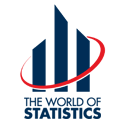Title: The Rake's Progress Revisited!
- Date/Time: Wednesday, September 24th
12:30 pm - 1:30 pm - Speakers: Nada Ganesh and Fritz Scheuren, NORC
- Presentation Materials:
Fritz Scheuren, NORC
Nada Ganesh - Discussant: Phil Kott, RTI
- Chair: Mike Fleming
- Location: Bureau of Labor Statistics Conference Center
To be placed on the seminar attendance list at the Bureau of Labor Statistics, you need to e-mail your name, affiliation, and seminar name to wss_seminar@bls.gov (underscore after 'wss') by noon at least 2 days in advance of the seminar, or call 202-691-7524 and leave a message. Bring a photo ID to the seminar. BLS is located at 2 Massachusetts Avenue, NE. Use the Red Line to Union Station. - Sponsor: WSS Methodology Section
- POC e-mail: scheuren@aol.com
- WebEx event address for attendees: https://dol.webex.com/dol/j.php?MTID=m358c27ad1fa5e0b8ab9b275f9e26b741
- For audio: Call-in toll-free number (Verizon): 1-866-747-9048 (US)
Call-in number (Verizon): 1-517-233-2139
(US) Attendee access code: 938 454 2 Call-in toll-free number (Verizon): 1-866-747-9048 (US) Call-in number (Verizon): 1-517-233-2139 (US) Attendee access code: 938 454 2 - Note: Particular computer configurations might not be compatible with WebEx.
Abstract:
Some old algorithms/approaches never quite outlive their usefulness. And Raking Ratio Estimation or simple "Raking" may be one of them. This is so, despite the explosion in new computational methods.
The justly famous 1940 paper by Deming and Stephan is our starting point. In our talk we will do a little theory, connecting raking to the right theoretical background (As many have pointed out, Deming and Stephan got that part wrong).
We will keep our applications within the general post-stratification framework that motivated the original paper. Anyway, building on the appropriate theory we, then, look at several variations of standard practice and talk about how, when properly modified, the basic raking approach still works well and how some of its well-known pitfalls, (e.g., weight attenuation) can be avoided.
The problem we will discuss at most length is a Big Data application when the data are brought together employing record linkage techniques.






